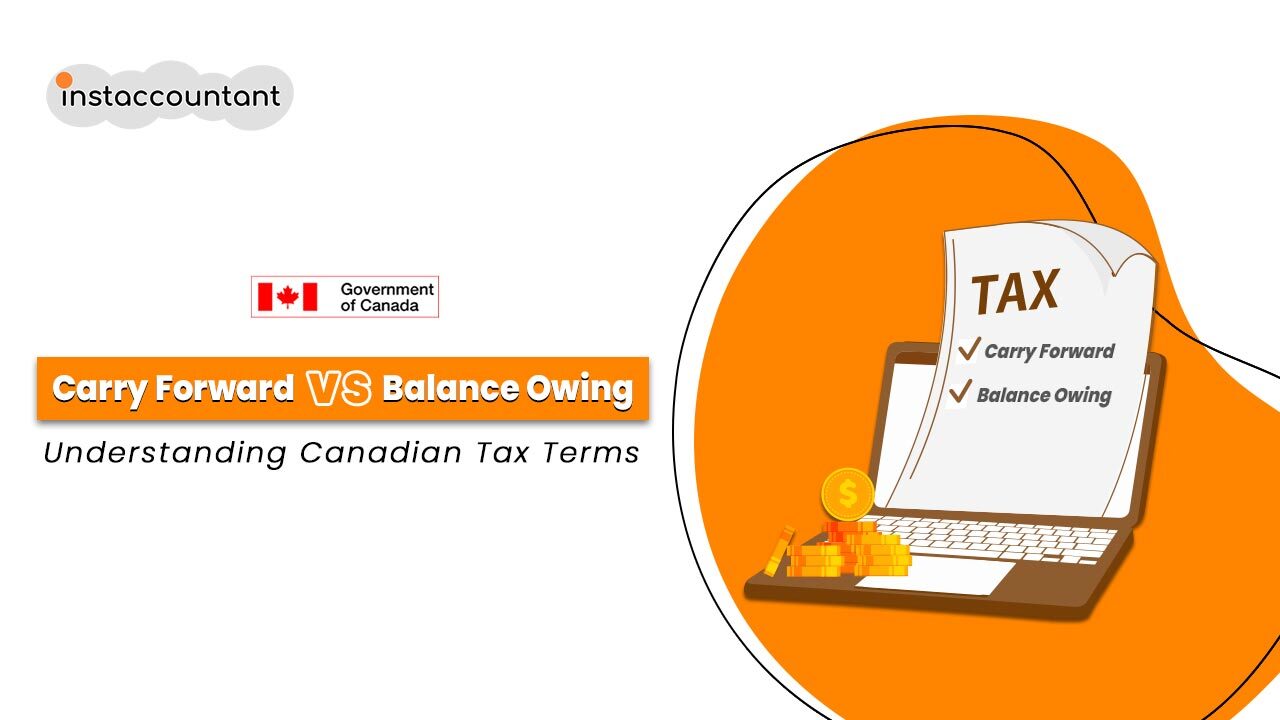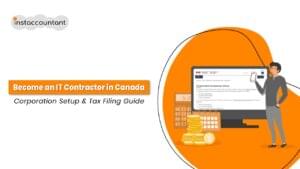Canadian tax filing season can feel like trying to learn a new language with unfamiliar lingo that may initially confuse you. You may come across the key tax terms “carry forward” and “balance owing.” Understanding how they are different and what they will mean to you in your tax planning is essential. Let’s take a closer look, shall we?
Carry Forward
Think of “carry forward” as a smart savings strategy within the tax system. Certain tax credits you’re eligible for might be more valuable to you in the future when your income or tax situation changes. The Canadian government allows you to “carry forward” these unused credits, saving them up for later tax years.
How Carry Forward Works
Imagine you’re a student in Canada and paid a significant amount in tuition fees in 2024. This qualifies you for a tuition tax credit – let’s say $3,000. However, due to a lower income this year, you only need $1,000 of those credits to reduce your tax payable to zero. The fantastic news is you don’t lose the remaining $2,000! You can “carry forward” this unused portion to future tax years.
Then, in 2025, when you’ve landed your first full-time job and have a higher income, you can apply that $2,000 carried-forward tuition tax credit to reduce the amount of income tax you owe significantly. This strategic use of credits can result in a larger refund or a smaller balance owing when you need it most.
Note: Not all tax credits can be carried forward, and those that can often have specific rules and time limits. For example, while tuition tax credits can be carried forward indefinitely, other tax credits may have expiry periods. Knowing the rules around certain credits you are claiming is essential.
Key Carry-Forward Tax Credits to Know:
- Tuition Tax Credits: As illustrated, these are a prime example. Students often accumulate substantial credits that can be used in their early career years.
- Capital Losses: If you sell investments at a loss, these capital losses can be used to offset capital gains in the current year or carried forward indefinitely to offset future capital gains. There are specific rules around how these can be applied.
- Non-Capital Losses: These can arise from business losses or certain other situations. They can generally be carried back up to 3 years and forward up to 20 years to offset income.
- Donation Tax Credits (Partial): While you can claim donations up to 75% of your net income annually, any unused portion can be carried forward for up to five years.
- Medical Expense Tax Credit (Partial): You can claim eligible medical expenses exceeding a certain threshold. If you have significant expenses in one year, you might not be able to claim the full amount, and the unused portion can be carried forward for one year.
Expert Tip: Carry forward allows you to plan your tax savings strategically. By saving credits for higher-income years, you can maximize their impact when you’re in a higher tax bracket. Keep meticulous records of any tax credits you carry forward. Your Notice of Assessment (NOA) from the CRA will usually show the amounts you have available to use in future years.
Balance Owing
On the flip side, a “balance owing” occurs when the total amount of income tax you owe for the year is more than the total amount of taxes already deducted from your income (e.g., from your paycheques) or paid through instalments. Essentially, you haven’t paid enough tax throughout the year.
Why Does a Balance Owing Happen?
- Insufficient Withholdings: If your employer didn’t deduct enough tax from your paycheques. This can happen if your personal tax situation changes (e.g., claiming new deductions) and you don’t update your TD1 form with your employer.
- Self-Employment Income: If you earn income as a freelancer or contractor and don’t make regular tax instalment payments, you’ll likely have a balance owing at tax time.
- Investment Income or Capital Gains: If you earn income from investments or realize capital gains and haven’t had tax withheld at the source, this income will be taxed when you file your return.
- Changes in Employment Status: A promotion, job change or taking on a second job can shift your income and potentially lead to under-withholding.
- Certain Deductions or Credits Claimed: While deductions reduce your taxable income, they don’t directly reduce the tax already withheld. If you claim significant deductions, you might still have a balance owing if your initial withholdings weren’t sufficient.
Understanding your Canadian tax obligations throughout the year is key to avoiding a large balance. If you have income sources beyond regular employment, consider making quarterly tax instalments to the CRA.
Managing a Balance Owing
Receiving a notice of a balance owed can be stressful, but it’s crucial to address it promptly. The CRA offers various payment methods, including online banking, a credit card (with a third-party provider), a debit card (by online process or at Canada Post), or mail.
Ignoring a balance owed is a costly mistake. It is a huge mistake to overlook a balance owed. The CRA starts charging interest on past-due amounts from the day following the due date for payment (typically April 30th). Late payment penalties will also be charged if you’ve had an amount owed in past years and are behind in payment. These charges accumulate rapidly, making it even harder to deal with your taxes.
If you find yourself with a balance owing, here’s what you can do:
- Adjust Your Tax Withholdings (Form TD1): If you’re an employee, you can complete a TD1 form and submit it to your employer to request additional tax be deducted from each paycheque.
- Make Instalment Payments: If you’re self-employed or have significant investment income, the CRA might require you to make regular instalment payments throughout the year to cover your estimated tax liability.
- Plan for Taxes: If you know you’ll have taxable income that isn’t subject to withholding (like investment income), set aside funds throughout the year to cover the anticipated tax.
Carry Forward vs. Balance Owing
Both carry forward and balance owing are key concepts to be aware of as you prepare for 2025 tax season in Canada. Carrying forward is taking a proactive approach that will allow you to maximize the value of your tax credits over time and potentially save money on future taxes. On the other hand, balance owing is a type of balance requiring immediate action and should be resolved before penalties and interest apply.
To make the most of both strategies, stay organized with your receipts, credits, and deductions, and consult with a tax professional if you have any questions about your tax situation.
FAQs
- What does carry forward mean in Canadian taxes? This means you can save certain unused tax credits and apply them to reduce your taxes in the future.
- How long can you carry forward tax credits in Canada? It depends on the specific credit. Some, like tuition, can be carried forward indefinitely, while others have time limits.
- What happens if I have a balance owed on my taxes in Canada? You must pay the outstanding amount by the deadline to avoid interest and potential penalties.
- How can I avoid a balance owed? Ensure enough tax is withheld from your income, make instalment payments if self-employed, and plan for taxes on investment income.
- Is it better to have a balance owed or a refund? Ideally, you want neither a large balance due nor a large refund. A large refund means you’ve overpaid your taxes throughout the year. Aim for a small balance owing or a small refund, indicating your withholdings were close to your actual tax liability.




